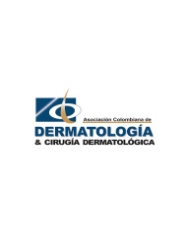Actualización en fotoinmunología
Palabras clave:
fotoinmunología, radiación ultravioleta, fotobiología, inmunosupresión, ácido urocánicoResumen
El campo de la fotobiología continúa captando gran parte de la atención en el área que investiga los efectos de la radiación no ionizante en el sistema inmune. La mayoría de los estudios se han realizado en murinos, por los dilemas éticos que ellos pueden plantear al realizarse en humanos. La radiación UVB siempre ha sido la más implicada en el desarrollo de la inmunosupresión, pero la UVA, implicada en la formación de las especies reactivas de oxígeno, cobra cada vez más importancia. Se tiene evidencia suficiente para afirmar que la radiación ultravioleta induce la inmunosupresión al producir
alteraciones en la presentación del antígeno, en la señalización intra e intercelular y al facilitar el desarrollo de una respuesta inmune con patrón Th2. Existen implicaciones clínicas importantes resultado de la inmunosupresión, como enfermedades infecciosas que pueden ser más graves o, lo que ha llamado la atención a algunos autores, la posible disminución en la eficacia de la vacunación en países tropicales. Continúan siendo un enigma las longitudes de onda precisas que afectan el sistema inmune, lo que hace pensar que el espectro para producir tales efectos es amplio. Por esto debe indicarse el uso de bloqueadores solares de amplio espectro con adecuada protección para UVB y UVA.
Biografía del autor/a
Adriana R. Cruz A., Universidad del Valle
RIII Dermatología, Universidad del Valle, Cali
Lucy García, Universidad del Valle
Docente adjunta, Universidad del Valle, Cali
Referencias bibliográficas
2. Kochevar IE, Pathak MA, Parrish JA. Photophysics, Photochemistry and Photobiology. En : Fitzpatrick T, Eisen A, Wolf K, Freedberg 1, et al. Dermatology in General Medicine. New York, McGraw-Hill. 1999: 220-229.
3. Duthie MS, Kimber 1, Norval M. The effects of ultravio-let radiation of the human immune system. Br J Der-matol 1999; 140: 995-1009.
https://doi.org/10.1046/j.1365-2133.1999.02898.x
4. Baron ED, Stevens SR. Sunscreens and immune pro-tection. Br J Dermatol 2002; 146: 933-937.
https://doi.org/10.1046/j.1365-2133.2002.04844.x
5. Yoshikawa T, Rae V, Bruñís-Slot W, et al. Susceptibility to effects of UVB radiation on induction of contact hy- persensitivity as a risk factor for skin cancer in humans. J lnvest Dermatol 1990; 95: 530-536.
https://doi.org/10.1111/1523-1747.ep12504877
6. Hollis DE, Scheibner A. Ultrastructural changes in epi-dermal Langerhans cells and melanocytes in response to ultraviolet irradiation in Australians of Aboriginal and Celtic deseen!. Br J Dermatol 1998; 119: 21-31.
https://doi.org/10.1111/j.1365-2133.1988.tb07097.x
7. Norris P, Poston RN, Thomas DS, et al. The expres-sion of endotelial leukocyte adhesión molecule-1 (ELAM-1 ), intercellular adhesión molecule-1 {ICAM-1 ), and vascular cell adhesión molecule-1 (VCAM-1) in ex-perimental cutaneous inflammation: a comparison of ultraviolet B erythema and delayed hypersensitivity. J lnvest Dermatol 1991; 96: 763-770.
https://doi.org/10.1111/1523-1747.ep12471720
8. Stevens SR, Shibaki A, Meunier L, et al. Suppressor T cell-activating macrophages in ultraviolet-irradiated human skin induce a novel TGF dependen! deficient IL-2rcx expressión. J lmmunol 1995: 155: 5601-5607.
9. Stevens SR, Tarry-Lehmann M, Cooper KD. Distinct cytokine use and production by T cells after activa-tion by Langerhans cells versus macrophages infil-trating UV-irradiated epidermis. J lnvest Dermatol 1998; 11 O: 490.
https://doi.org/10.1016/S0923-1811(98)83108-3
10. Hersey P, Haran G, Hasic E, et al Alteration of T cell subsets and induction of suppresorT cell activity in nor-mal subjects after exposures to sunlight. J lmmunol 1983; 31: 171-174.
11. Gilmour JW, Vestey JP, George S, et al. Effect of pho- totherapy and urocanic acid isomers on natural killer cell function. J lnvest Dermatol 1993; 101: 169-174.
https://doi.org/10.1111/1523-1747.ep12363652
12. Skov L, Hansen H, Barker JN. Contrasting effects of ultraviolet-A and ultraviolet-B exposure on induction of contact sensitivity in human skin. Clin Exp lmmunol 1997; 107: 585-588.
https://doi.org/10.1046/j.1365-2249.1997.d01-944.x
13. Schwarz A, Bhardwaj R, Aragene Y. Ultraviolet B indu-ced apoptosis of keratinocytes: evidence for partial in- volvement of tumor necrosis factor in the formation fo sunburn cells. J lnvest Dermatol 1995; 104: 922- 927.
https://doi.org/10.1111/1523-1747.ep12606202
14. De Fine Olivarius GE, Lock-Anderson J, Gronhoj LF, et al. Urocanic acid isomers in patients with basal cell carcinoma and cutaneous malignant melanoma. Br J Dermatol 1998; 138: 986-992.
https://doi.org/10.1046/j.1365-2133.1998.02264.x
15. De Fine Olivarius GE, Wulf HC, Crosby J, et al. The sunscreening effect of urocanic acid. Photodermatol Photoimmunol, Fhotomed 1996; 12: 95-99.
https://doi.org/10.1111/j.1600-0781.1996.tb00183.x
16. Gilmour JW, Vestey JP, Norval, M. Effect of photothe-rapy and urocanic acid isomers on natural killer cell function. J lnvest Dermatol 1993; 101: 169-174.
https://doi.org/10.1111/1523-1747.ep12363652
17. Hurks MHM, Out-Luiting C, van der Molen R, et al. Differential suppression of the human mixed epidermal cell lymphocyte reaction (MECLR) and mixed lympho-cyte reaction (MLR) by cis-urocanic acid. Photochem Photobiol 1997; 65: 616-621.
https://doi.org/10.1111/j.1751-1097.1997.tb01902.x
18. Chung HT, Burnham DK, Robertson B, et al. lnvolve-ment of prostaglandins in the immune alterations cau-sed by the exposure of mice to ultraviolet radiation. J lmmunol 1986; 137: 2478-2484.
19. Granstein RD. Photoimmunology. En : Fitzpatrick T, Ei-sen A, Wolf K, Freedberg 1, et al Dermatology in Ge-neral Medicine. New York, McGraw-Hill 1999: 1562-1571.
20. Norval M. What's new in photoimmunology . Photoder-matol Photoimmunol Photomed 2001; 17: 136-137.
https://doi.org/10.1034/j.1600-0781.2001.170306.x
21. Sleijffers A, Garssen J, de Gruijl FR, et al. UVB expo-sure impairs immune responses alter hepatitis B vacci-nation in two different mouse strains. Photochem Pho-tobiol 2002; 75: 541-546.
https://doi.org/10.1562/0031-8655(2002)0750541UEIIRA2.0.CO2
22. Middleton E Jr, Kandaswami C. Effects of flavonoids on immune and inflammatory cell functions. Biochem Pharmacol 1992; 43: 1167-1179.
https://doi.org/10.1016/0006-2952(92)90489-6
23. Katiyar SK, Bergamo BM, Praveen K, et al. Green tea polyphenols: DNA photodamage and photoimmunology. J Photochem Photobiol 2001; 65: 109-114.
https://doi.org/10.1016/S1011-1344(01)00248-2
24. Pinnell ShR, Cutaneous photodamage, oxidative stress, and topical antioxidant protection. J Am Acad Dermatol 2003; 48: 1-19.
https://doi.org/10.1067/mjd.2003.16
25. Fuller CJ, Faulkner H, Bendich A, et al. Effect of -carotene supplementation on photosuppression of delayed-type hypersensitivity in normal young men. Am J Clin Nutr 1992; 56: 684-690.
https://doi.org/10.1093/ajcn/56.4.684
Cómo citar
Descargas

Descargas
Publicado
Cómo citar
Número
Sección
| Estadísticas de artículo | |
|---|---|
| Vistas de resúmenes | |
| Vistas de PDF | |
| Descargas de PDF | |
| Vistas de HTML | |
| Otras vistas | |






